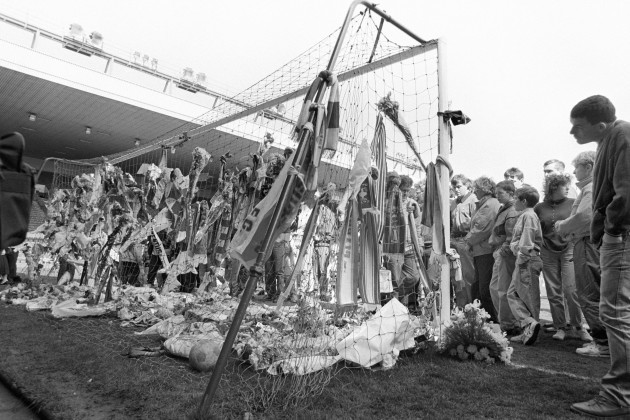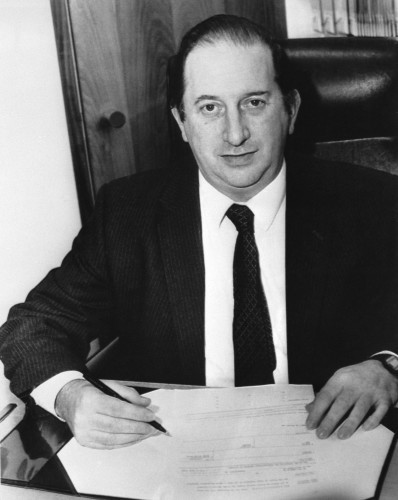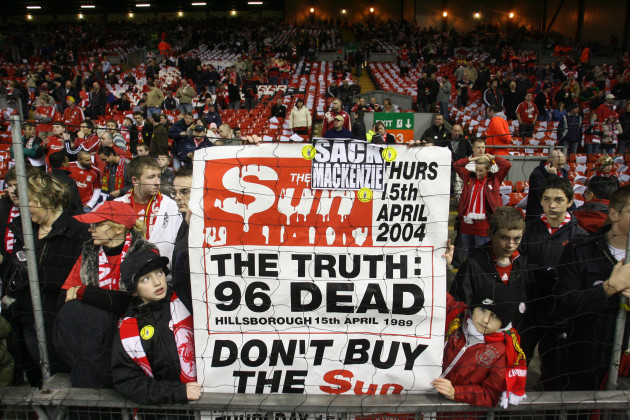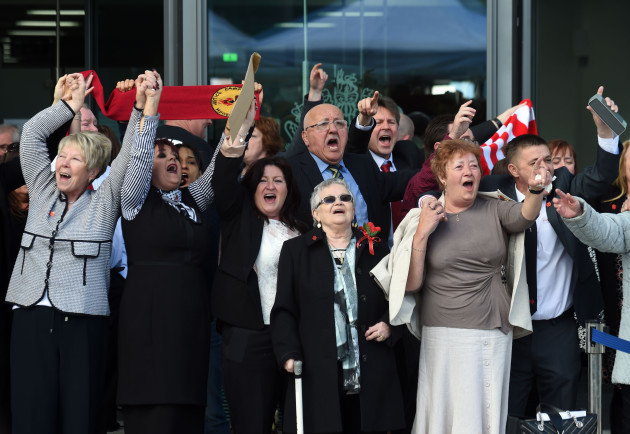THE JURY AT the inquests into the 1989 Hillsborough disaster today provided justice for the 96 football fans who lost their lives that day by ruling not only that they were unlawfully killed but that their behaviour did not cause or contribute to their death.
But why did it take so long? Here are the key dates in the worst disaster in the history of British sport:
15 April 1989: At the start of an FA Cup semi-final between Liverpool and Nottingham Forest at Hillsborough in Sheffield, northern England, a crush of supporters against the steel fences at the Leppings Lane end of the stadium leads to the deaths of 94 Liverpool fans and leaves 766 injured.
April 1989: Days after the disaster, tabloid newspaper The Sun publishes a front-page story headlined ‘The Truth’, saying drunk Liverpool fans were to blame, prompting a mass boycott of the paper on Merseyside. Fourteen-year-old Lee Nicol, who was on life support, dies, taking the death toll to 95.
August 1989: An interim report by leading judge Lord Justice Peter Taylor says police were at fault for failing to close off a tunnel leading to pens for supporters, failing to control the build-up of fans outside the stadium and their slow reaction to the tragedy.
He criticises Chief Superintendent David Duckenfield, the senior policeman at the game, for “failing to take effective control” and South Yorkshire Police, which blamed supporters for arriving at the ground “late and drunk”.
January 1990: Taylor’s full report recommends the removal of terrace fences and the introduction of all-seater stadiums.
April 1990: An inquest into the victims’ deaths begins, heard by coroner Dr Stefan Popper.
August 1990: Britain’s Director of Public Prosecutions finds there is insufficient evidence to bring criminal charges against the police or any other individual, group or body.
March 1991: Popper’s inquest into the deaths returns verdicts of accidental death for all the victims, ruling that they were all dead by 3:15 pm.
March 1993: Tony Bland, 22, becomes the 96th and final victim of the tragedy when he is taken off life support after four years in a persistent vegetative state.
June 1997: Home Secretary Jack Straw orders evidence to be re-scrutinised.
August 1998: After Straw rules out a new inquiry, the Hillsborough Family Support Group brings private manslaughter charges against Duckenfield and his deputy, Superintendent Bernard Murray.
July 2000: Following a six-week trial, a jury finds Murray not guilty of manslaughter and fails to reach a verdict on Duckenfield. The judge refuses a retrial, saying that a fair trial for Duckenfield would be impossible.
April 2009: The Hillsborough Independent Panel is set up in the wake of the 20th anniversary of the tragedy.
October 2011: British lawmakers agree that all government papers should be handed over to the independent panel.
September 2012: The report of the Hillsborough Independent Panel finds police orchestrated a cover-up, falsified documents and blamed innocent supporters.
It says the lives of 41 fans could have been saved and clears supporters of any wrongdoing or blame for the disaster, prompting a public apology from Prime Minster David Cameron.
Kelvin MacKenzie, editor of The Sun at the time of the tragedy, offers “profuse apologies” for the paper’s notorious front page.
October 2012: The Independent Police Complaints Commission watchdog and Director of Public Prosecutions announce they will both launch inquiries into possible crimes committed by police involved in the disaster.
December 2012: Following the cover-up revelations, London’s High Court quashes the original coroner’s verdicts of accidental death.
March 2014: Fresh inquests into the deaths begin at a purpose-built courtroom in Warrington, east of Liverpool, with families of the 96 victims in attendance.
January 2016: After 267 days of evidence — the longest case heard by a jury in British legal history — from over 800 witnesses, coroner John Goldring begins his summing up.
6 April 2016: Jury retires to consider its verdict.
26 April 2016: The jury finds that the 96 fans were unlawfully killed and that their behaviour did not cause or contribute to the disaster.
Additional reporting by Steve O’Rourke.






